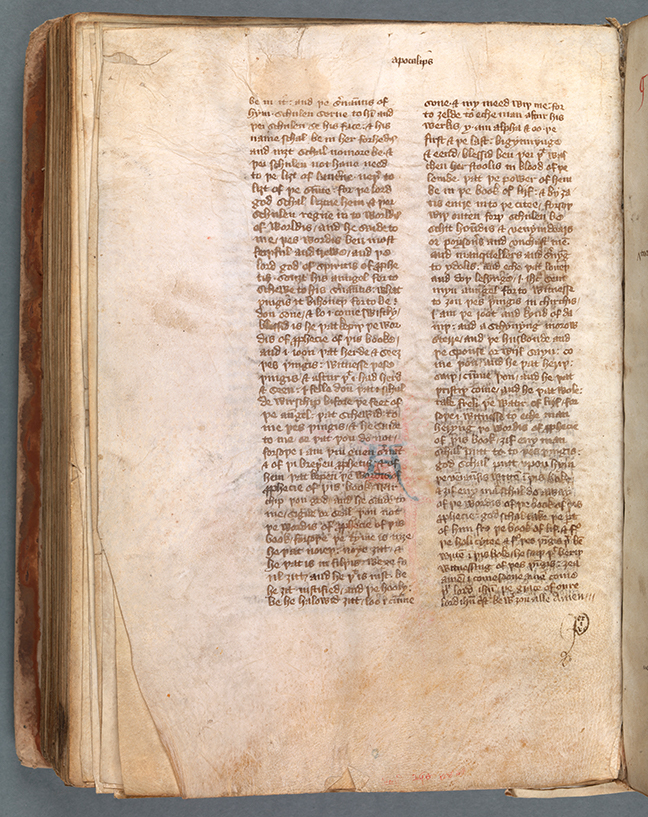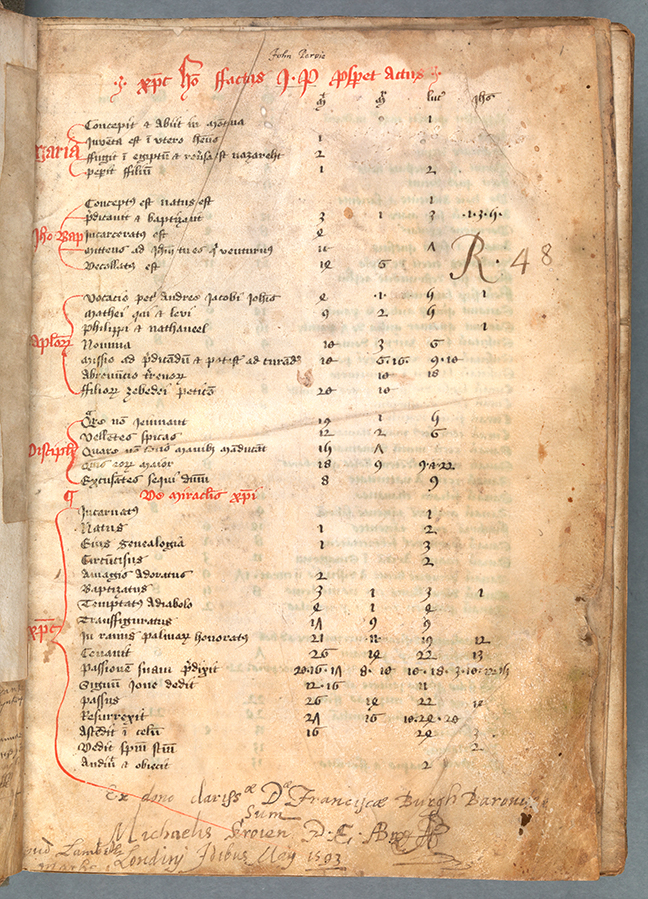Home / History / Social History / The History of the Book in the Early Modern Period: 1450 to 1800 / Tracking provenance
This article is from the free online
The History of the Book in the Early Modern Period: 1450 to 1800


Reach your personal and professional goals
Unlock access to hundreds of expert online courses and degrees from top universities and educators to gain accredited qualifications and professional CV-building certificates.
Join over 18 million learners to launch, switch or build upon your career, all at your own pace, across a wide range of topic areas.

 Fig 1. Detail from Folio 217v of TCD MS 75, showing John Purvey’s signature. © The Board of Trinity College Dublin.
Fig 1. Detail from Folio 217v of TCD MS 75, showing John Purvey’s signature. © The Board of Trinity College Dublin.  Fig 2. Folio 1r of TCD MS 75, recording its presentation to Michael Seroien. © The Board of Trinity College Dublin.
Fig 2. Folio 1r of TCD MS 75, recording its presentation to Michael Seroien. © The Board of Trinity College Dublin. 





